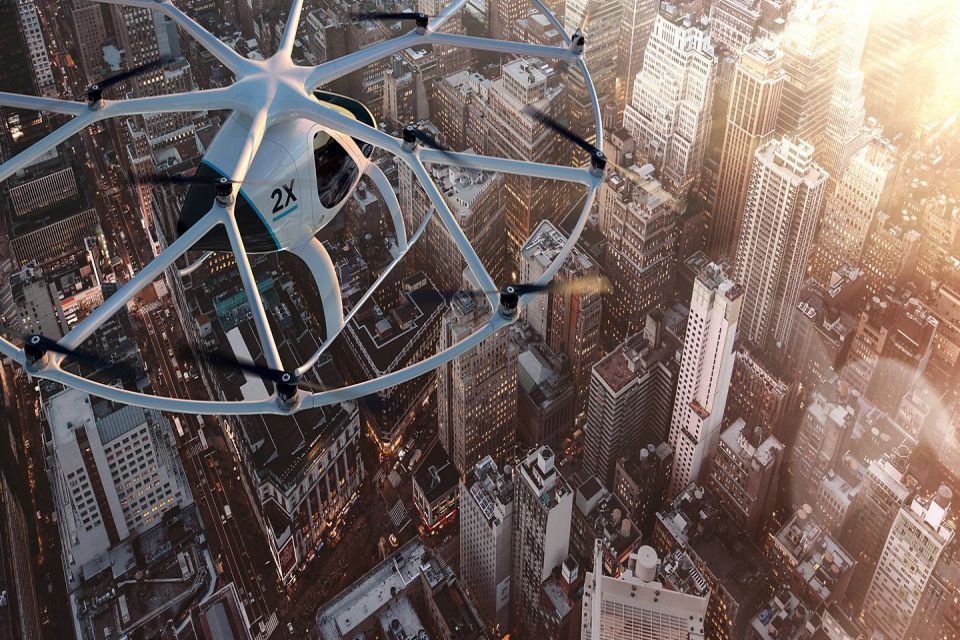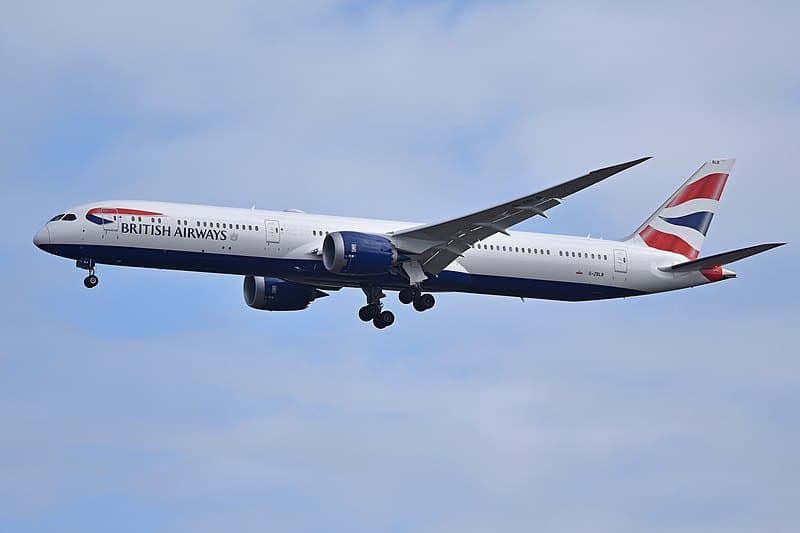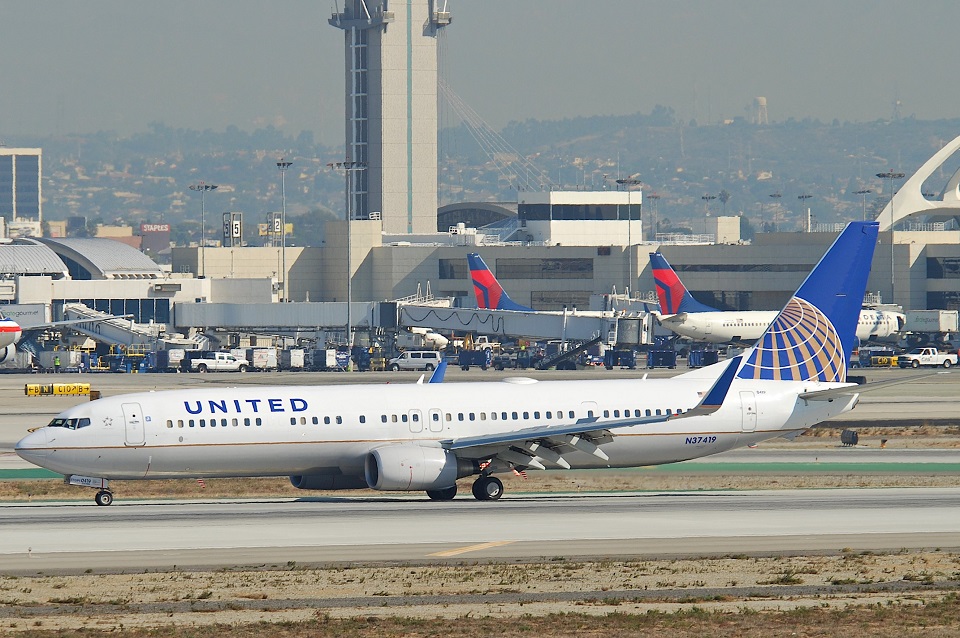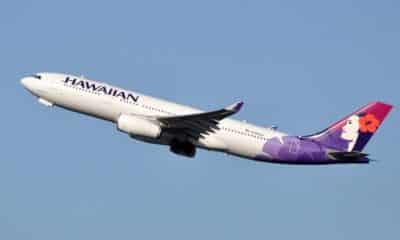Aviation
How Volocopter’s ‘flying taxi’ stations will be running by 2028

How Volocopter’s ‘flying taxi’ stations will use an elaborate system of conveyor belts and lifts to handle 10,000 passengers each day by 2028.
The future of travel has been unveiled by Volocopter – and it seems remarkably efficient. The German flying car start-up has released a video that shows its vision of an urban ‘air taxi’ system that could handle 10,000 passengers each day. The system features elaborate ‘Volo-port’ stations perched on top of skyscrapers that are equipped with conveyor belts, swappable battery packs and lifts to speed up transfer of passengers. This means aircraft are always fully charged and ready to go, according to the company, which claims these futuristic landing pads could be commercially viable for normal people. The company hopes to have a prototype station in place next year but predicts that it will take around ten years before a city-wide system is in place.
The Stuttgart-based start-up’s ambitious plan is to create circular launchpads on the top floor of skyscrapers in cities from where the electric aircraft would take off and land, writes the Verge. They would have a conveyor belt that would transport the vertical takeoff and landing (VTOL) aircraft into an indoor hanger.
From there, they would moved to a garage where maintenance work can be carried out. The system would be so efficient the company claims 1,000 passengers could board and disembark every hour.’It’s about mass transportation of people and how it can be done in a safe way and with what infrastructure,’ Alexander Zosel, Volocopter’s co-founder and chief innovation officer, told the Verge. Mr Zosel said the Volocopter aircraft would need to land every 30 seconds. Having such high volume is important if the company is able to handle lots of passengers and therefore be affordable.
Initially, the taxis would only fly over a short distance with flight times of around 30 minutes and a maximum range of 17 miles (27km). However, some have doubts about how feasible this technology will be – most batteries are still far off offering the power-to-weight ratio required to take off. The company has demonstrated its capabilities in Germany and Dubai where it believed the company is most likely to launch its first service. More recently it announced it partnership with Intel in CES at Las Vegas.
The company stunned attendees during Intel’s keynote by flying the drone right onto the stage, in what a spokesperson admitted was a ‘ballsy’ move. In a presentation about Volocopter’s craft, an exhibitor said it is the ‘world’s first autonomous air taxi.’The craft completed the first unmanned test flight in Dubai this past autumn. ‘Potentially in years to come, you would be able to take your phone out and pull up a transportation application, and similar to what you do with a taxi today, summon this to your location, hop in, tell it where you’re going. ‘And it would autonomously fly you to that location, no pilot required. It’s a safe, reliable form of transportation’, the exhibitor said. The Volocopter craft ‘is essentially a scaled-up super drone,’ he noted. It is fully electric, allowing for zero emission travel. And, it’s quiet enough to be operated in an urban environment.
Volocopter relies on a system of ‘redundancies’ to ensure its safety, meaning there are many propellers, batteries, and motors to compensate in case one goes out. With Intel’s flight control technology and a ‘myriad of sensors,’ the craft is ‘constantly analysing environmental data to ensure those redundancies,’ a Volocopter exhibitor explained.
There are 18 independent motors and propellers, but ‘if that seems like way too many, what it allows for is, you can lose a propeller or several of them and still maintain your flight.’There are nine batteries, ensuring the same type of back-up. According to the firm, rides in the flying taxis would likely be comparable to a trip in an Uber Black.
Courtesy: DailyMail

Aviation
Air India’s B747 Makes Its Final Journey, Waving Farewell to Fans

In a poignant moment marking the end of an era in aviation history, Air India’s iconic Boeing 747 aircraft, affectionately known as the ‘Queen of the Skies,’ embarked on its ultimate journey from Mumbai’s international airport.
The departure, bound for Plainfield, USA, where it will undergo dismantling and part-stripping under the ownership of American AerSale, signals the closure of a storied chapter for the airline.
Once revered for transporting dignitaries ranging from prime ministers to presidents, the Boeing 747 has etched itself into aviation lore. Yet, as airlines worldwide pivot towards more contemporary and cost-effective aircraft, Air India’s decision to bid farewell to its remaining Boeing 747s reflects the pragmatic realities of today’s aviation landscape.
The sale of these majestic planes to AerSale represents a strategic move by Tata Group, Air India’s new custodian, towards optimizing operational efficiency and embracing modern industry standards. Out of the four aircraft sold, two will be repurposed into freighters, while the remaining pair will be meticulously disassembled to salvage valuable components.
The final flight from Mumbai witnessed a touching tribute as pilots performed a traditional ‘Wing Wave,’ symbolizing the conclusion of the Boeing 747‘s distinguished service with Air India. This poignant gesture encapsulates the deep sentiment attached to the aircraft’s departure and its significant contribution to the airline’s legacy.
As the Boeing 747 embarks on its journey to Plainfield, USA, nostalgia permeates the air, evoking memories of its maiden flight on March 22, 1971. Over five decades, Air India operated a total of 25 Boeing 747s, each leaving an indelible mark on the annals of aviation history.
Middle East
British Airways Resumes Daily Flights to Abu Dhabi, After 4-Year hiatus

British Airways made its way back to Abu Dhabi, landing at Zayed International Airport. Following a four-year break in service, both crew and passengers were greeted with enthusiasm.
In the summer of 2024, British Airways plans to launch a daily route, utilising a Boeing 787-9, from London Heathrow to Abu Dhabi. The new route enhances ties between the UAE and the UK and expands vast worldwide network, catering to passengers who may be visiting friends and family or travelling for business.
Arriving in Abu Dhabi at 08.30+1, flight BA073 to Abu Dhabi leaves London Heathrow at 22.25. Departing at 10.10 and landing at London Heathrow at 15.20 is the inbound flight (BA072).
The chief executive officer and managing director of Abu Dhabi Airports, Elena Sorlini, stated: “We are delighted to welcome British Airways to Zayed International Airport. Their daily schedule is expected to improve connectivity and stimulate travel and business.” Visitors may experience the dynamic capital of the United Arab Emirates like never before at our brand-new, award-winning, state-of-the-art terminal, where they will be welcomed with the best kind of Emirati hospitality.”
Flight schedule:
| London Heathrow (LHR) to Zayed International (AUH)All times are local | ||||||
| Season | Flight number | Departing LHR | Arriving AUH | Flight number | Departing AUH | Arriving LHR |
| Summer ‘24 | BA73 | 22:25 | 08:30+1 | BA72 | 10:10 | 15:20 |
| Winter ‘24 | BA73 | 22:25 | 09:30+1 | BA72 | 11:10 | 15:20 |
Aviation
FAA investigation: Passenger seated in Captain’s seat inside cockpit at cruising altitude

A viral video capturing a startling moment aboard a United Airlines charter flight from Denver to Toronto has triggered a federal investigation.
The footage, initially shared on social media by Hensley Meulens, the hitting coach for the Colorado Rockies baseball team, depicts a member of the coaching staff seated in one of the pilot seats while the aircraft was in mid-flight.
In his caption, Meulens expressed gratitude to the captain and first officer for allowing him this unusual experience. The video, filmed by another passenger, reveals the cockpit door open, and at one point, a third passenger briefly enters the flight deck. Alarmingly, during this time, the captain was absent from the cockpit.
Despite the flight being a private charter operated by United Airlines, company and Federal Aviation Administration (FAA) regulations strictly prohibit passengers from entering the cockpit during flight or leaving the flight deck unsecured.
United Airlines swiftly responded, expressing deep concern over the incident. A spokesperson emphasized that the video depicted an unauthorized person in the flight deck at cruising altitude with the autopilot engaged, constituting a clear violation of safety and operational policies.
The FAA confirmed that it is actively investigating the incident, highlighting that unauthorized access to the flight deck during flight is a violation of federal regulations. The agency assured that it is taking the matter seriously and will conduct a thorough examination to ensure compliance with aviation safety standards.




























